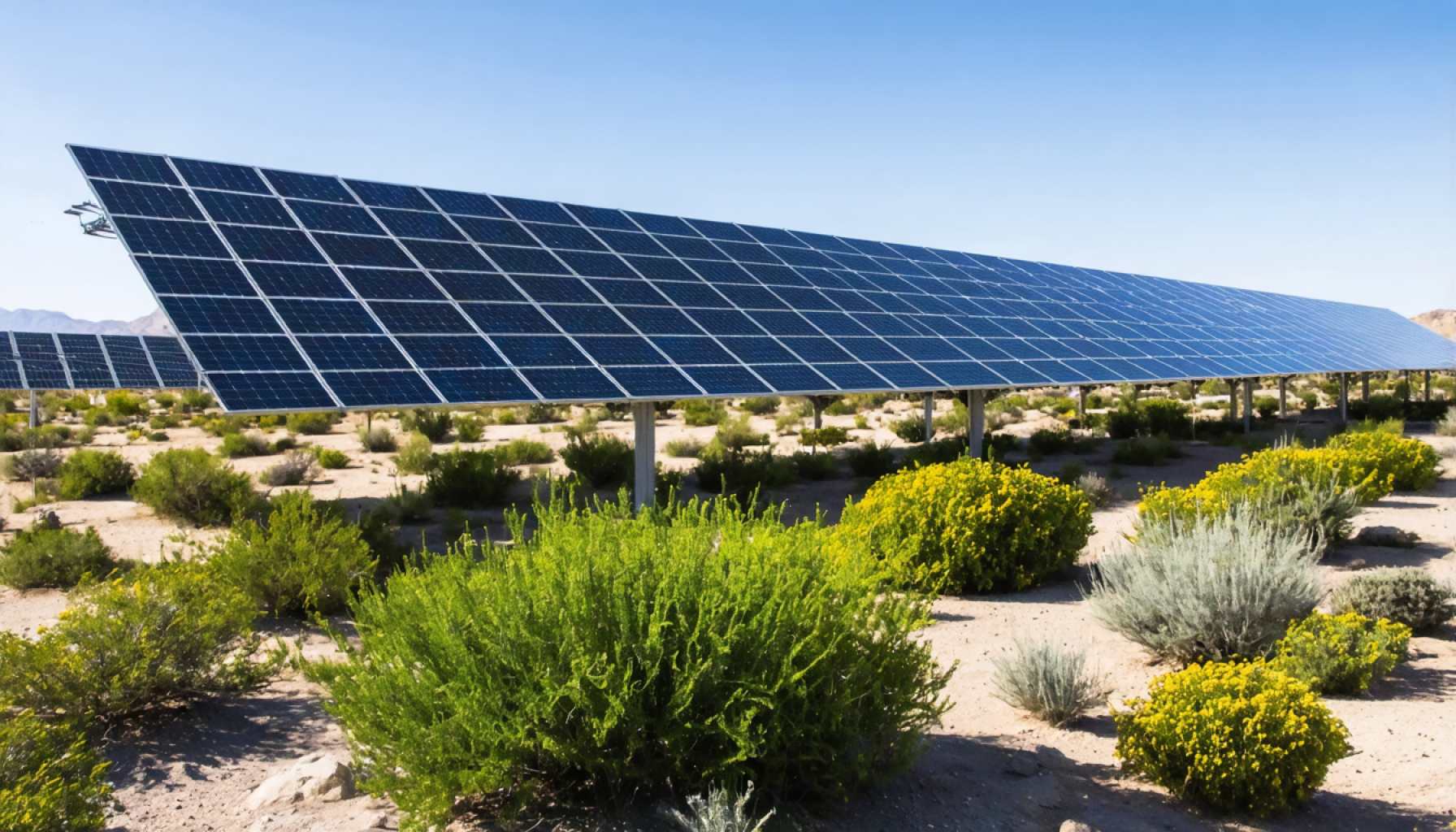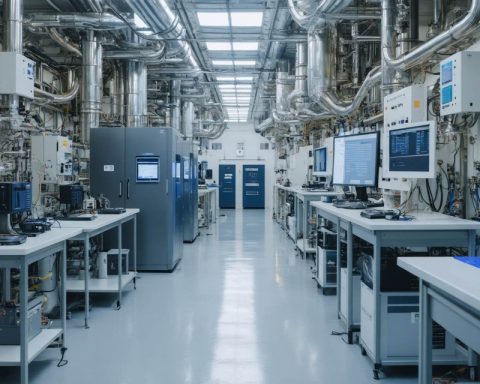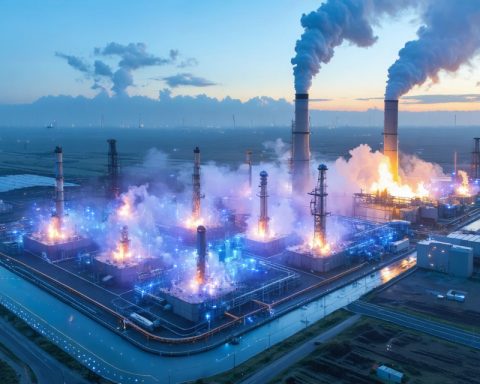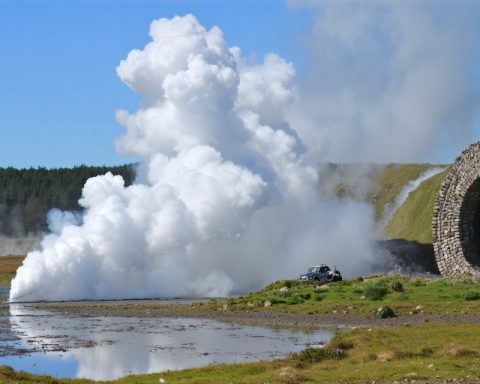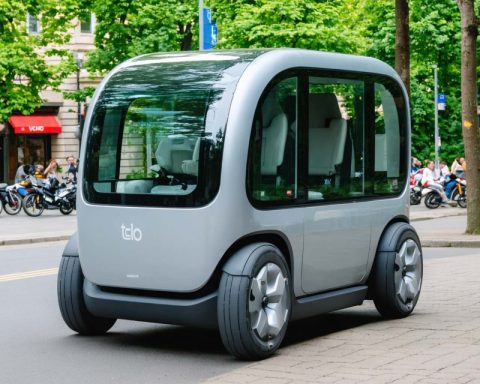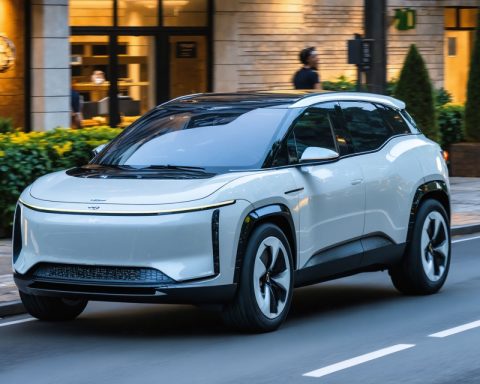- Solar power turns deserts into hubs of renewable energy and innovation, exemplified by regions like Masdar City and Ouarzazate.
- Photovoltaic farms and solar thermal installations harness the sun, driving clean energy production and reducing reliance on fossil fuels.
- The Noor Solar Complex in Morocco, with a capacity of 580 megawatts, leads Africa’s push for renewable energy.
- Masdar City exemplifies sustainable urban design, integrating solar power with energy-efficient infrastructure in a harsh desert climate.
- Solar energy empowers local economies, creating jobs and enhancing quality of life while conserving natural resources.
- Embracing solar technology enables the transformation of challenging environments, fostering resilient and sustainable communities.
Beneath the scorched skies of the world’s most unforgiving deserts, a revolution in renewable energy unfolds. Solar power, a beacon of sustainability, illuminates a future once clouded by fossil fuels, turning barren landscapes into vibrant ecosystems of innovation and hope.
Rippling waves of solar panels now adorn the sun-drenched plains of places like Masdar City in the United Arab Emirates and Ouarzazate in Morocco, capturing the relentless desert sun. These photovoltaic farms, stretching to the horizon, are not just technological marvels but symbols of transformation. Each panel absorbs sunlight and converts it into a pulse of clean energy, powering homes, businesses, and dreams.
Solar mirages in these sands are far from illusions. In Ouarzazate, the Noor Solar Complex stands as a gleaming citadel of sustainability, boasting an impressive capacity of 580 megawatts. This sprawling network of solar panels and solar thermal installations harness the sun’s energy with surprising efficiency, setting records and leading Africa’s renewable charge.
Masdar City, a planned urban oasis, exemplifies how cities can thrive sustainably at the heart of the desert. Designed with energy efficiency at its core, this eco-city draws power from a solar farm that meets its high-tech demands. Its innovative design includes shaded streets and green buildings that seem to grow from the earth itself, ensuring comfort despite the searing temperatures.
The audacity of solar technology extends beyond power generation. It redefines economic potential and sustainability in areas previously dismissed as uninhabitable. Access to renewable energy fosters local industries, spurs employment, and enhances the quality of life, all while reducing dependency on dwindling natural resources.
Among the swirling sands, nature reclaiming its balance offers a powerful image—one of resilience and adaptation. Solar power does not merely promise a more sustainable future but delivers it, empowering communities to grow under the desert sun with the grit of a thousand sandstorms.
Navigating today’s evolving energy landscape demands a clear takeaway: embracing innovation and sustainability helps create thriving communities from the harshest environments. Solar power stands as a vital tool, transforming the heat of adversity into a sustainable, thriving, and green reality.
Solar Power: Transforming Deserts into Sustainable Energy Oases
Solar power is revolutionizing renewable energy in the harshest environments, transforming deserts into thriving technological hubs. The deserts’ relentless sun is no longer an obstacle but an opportunity, enabling many regions to transition from fossil fuels to sustainable energy solutions.
How Solar Power Works in Desert Environments
Solar panels in desert conditions function primarily through photovoltaic (PV) cells. These cells convert sunlight directly into electricity. Solar thermal technology, used in places like the [Noor Solar Complex](https://masdar.ae), uses mirrors to concentrate sunlight, heating fluid to produce steam and drive turbines.
How-To Steps for Establishing a Desert Solar Farm:
1. Site Assessment: Evaluate the local climate, land availability, and energy demand.
2. Tech Selection: Choose between PV panels or solar thermal plants based on the site’s specific needs.
3. Financial Planning: Assess the cost implications of installation, maintenance, and potential subsidies or incentives.
4. Installation and Testing: Install the solar panels and perform rigorous testing to ensure efficiency and safety.
5. Operations and Maintenance: Set up regular maintenance schedules to keep the systems at peak performance.
Real-World Use Cases and Industry Trends
In Ouarzazate, Morocco, the Noor Solar Complex sets a global benchmark. It plays a critical role in Africa’s renewable energy landscape by generating over 580 megawatts of power, enough to power over a million homes.
Market Forecasts:
– The global solar energy market is projected to grow significantly, driven by declining costs and technological advancements. IRENA forecasts solar power to become the world’s main energy source by 2050.
Key Features, Specs, and Security
Solar panels used in deserts must withstand extreme temperatures and dust storms. Many panels now feature self-cleaning coatings and robust materials to ensure durability.
Security and Sustainability: Ensuring that solar farms have cybersecurity systems in place is crucial, as they are becoming integral to national energy grids. Sustainable operations also mean setting up wildlife-compatible solar fields to preserve local ecosystems.
Insights and Predictions
Many experts agree that desert solar farms are key to achieving global carbon reduction targets. The sheer scale of solar projects in these areas, combined with technological innovation, will likely drive more investments into the sector.
Pros and Cons Overview
Pros:
– Abundant sunlight: Deserts provide the perfect environment for harnessing solar energy.
– Minimal population displacement: These vast uninhabited lands minimize social impacts.
– High energy potential: Endless sunlight offers significant potential energy output.
Cons:
– Initial costs: High capital investment in infrastructure and technology.
– Environmental Impact: Possible disruption of local desert ecosystems.
– Maintenance: Requires regular cleaning and maintenance to ensure efficiency.
Conclusion and Quick Tips
– Optimize Efficiency: Regular dust and sand cleaning of solar panels can boost efficiency by up to 20%.
– Innovative Design: Consider designs that mitigate heat and make use of natural cooling systems.
– Local Training: Invest in training local communities to maintain and operate solar farms, fostering economic benefits.
Solar power is indeed a beacon of hope and sustainability in the world’s deserts. Through innovative practices and continued investment, these harsh landscapes are being transformed into sustainable energy oases, paving the way for a greener future. For more on solar initiatives, visit [Masdar](https://masdar.ae) or [IRENA](https://irena.org).
